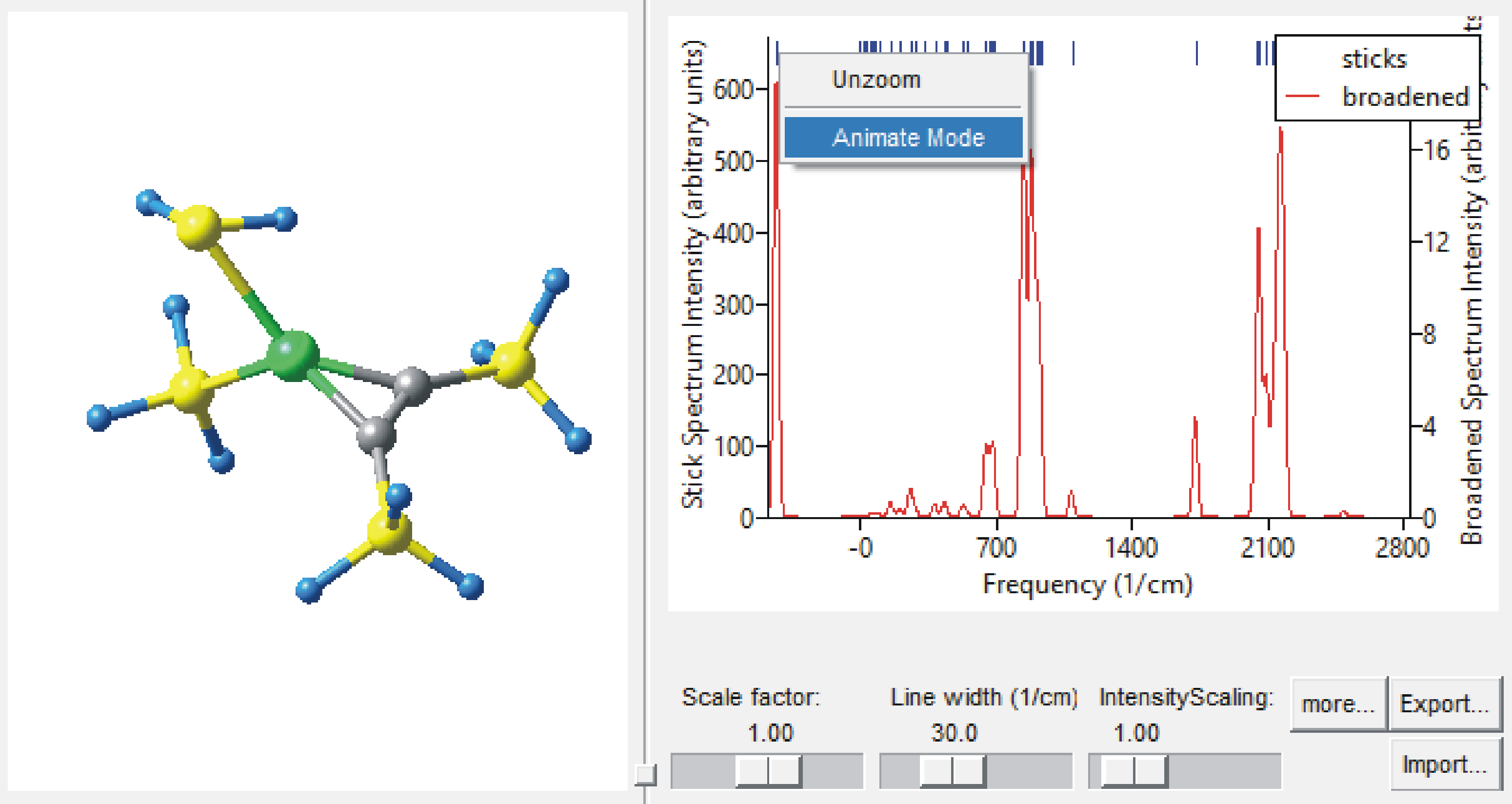MedeA Gaussian GUI: Expanding the Limits of Computational Chemistry
At-a-Glance
MedeA ®[1] Gaussian GUI provides a graphical user interface to the quantum chemistry code Gaussian. Gaussian is the software of reference for the quantum chemist. It includes the widest range of quantum chemical methods, including most of the known semi-empirical, DFT, time-dependent, Hartree-Fock, and post-Hartree-Fock methods, as well as a large library of electronic basis sets.
Key Benefits
- Saves company R&D budget by speeding up research
- Efficient GUI gives access to Gaussian
- Fully integrates in the MedeA Environment
- Benefits from all MedeA functionalities (High Throughput, etc.)
- Offers the widest range of quantum chemical methods and computed molecular properties
- Offers access to the gold standard of molecular properties from high level quantum chemistry

Animation and visualization of normal modes of vibration calculated with Gaussian in MedeA [1]
Key Features
- Full integration of GAUSSIAN into the MedeA Gaussian GUI
- Easy preparation and submission of routine calculations through MedeA’s Task and Jobservers
- Generation of valuable results in the computational, high-throughput, and Big Data oriented environment of MedeA
- Access to the results and properties in convenient summary files
- Visualization in the MedeA graphical environment, as shown in the animation of normal mode of vibration, molecular orbitals, and electrostatic potential figures
- Gathering and tabulation of Gaussian data and properties, using the MedeA HT-launchpad to constitute molecular databases
- Complete access to all *Gaussian input directives, to create any specific calculation protocol and property calculation, which are readily accessible in the standalone Gaussian software

Visualization of Gaussian molecular orbitals calculated with MedeA [1]
‘Theory attracts practice as the magnet attracts iron.’
-Carl Friedrich Gauss
Properties from Gaussian
- Antiferromagnetic coupling
- Atomic charges
- Dipole moment
- Electron affinities
- Electron density
- Electronic circular dichroism (ECD)
- Electrostatic potential
- Electrostatic potential-derived charges
- Electronic transition band shape
- Gibbs free energy of solvation
- High accuracy energies
- Hyperfine coupling constants (anisotropic)
- Hyperfine spectra tensors (including g tensors)
- Ionization potentials
- IR and Raman spectra
- Pre-resonance Raman spectra
- Resonance Raman spectra
- Molecular orbitals
- Multipole moments
- NMR shielding and chemical shifts
- NMR spin-spin coupling constants
- Optical rotations (ORD)
- Polarizabilities and hyperpolarizabilities
- Raman optical activity (ROA)*
- Thermochemical analysis
- UV/Visible spectra
- Vibration-rotation coupling
- Vibrational circular dichroism (VCD)
- Vibronic (absorption and emission) spectra
The vibrational properties are obtained within the harmonic approximation and include (optionally) anharmonic effects

Visualization of electrostatic potential calculated with Gaussian in MedeA [1]
Required Modules
- MedeA Environment
Recommended Modules
- MedeA HT-Launchpad
- MedeA HT-Descriptor
Find Out More
Find out how the MedeA Gaussian GUI can be employed from our webpage Materials Design Application Notes:
- Energies of stable conformers in heavy alkanes and triglycerides using MedeA
Learn more about the MedeA Molecular Builder by watching How to Build a Complicated Molecule (MMA) on the Materials Design Youtube Channel.
| [1] | (1, 2, 3, 4) MedeA and Materials Design are registered trademarks of Materials Design, Inc. |
| download: | pdf |
|---|